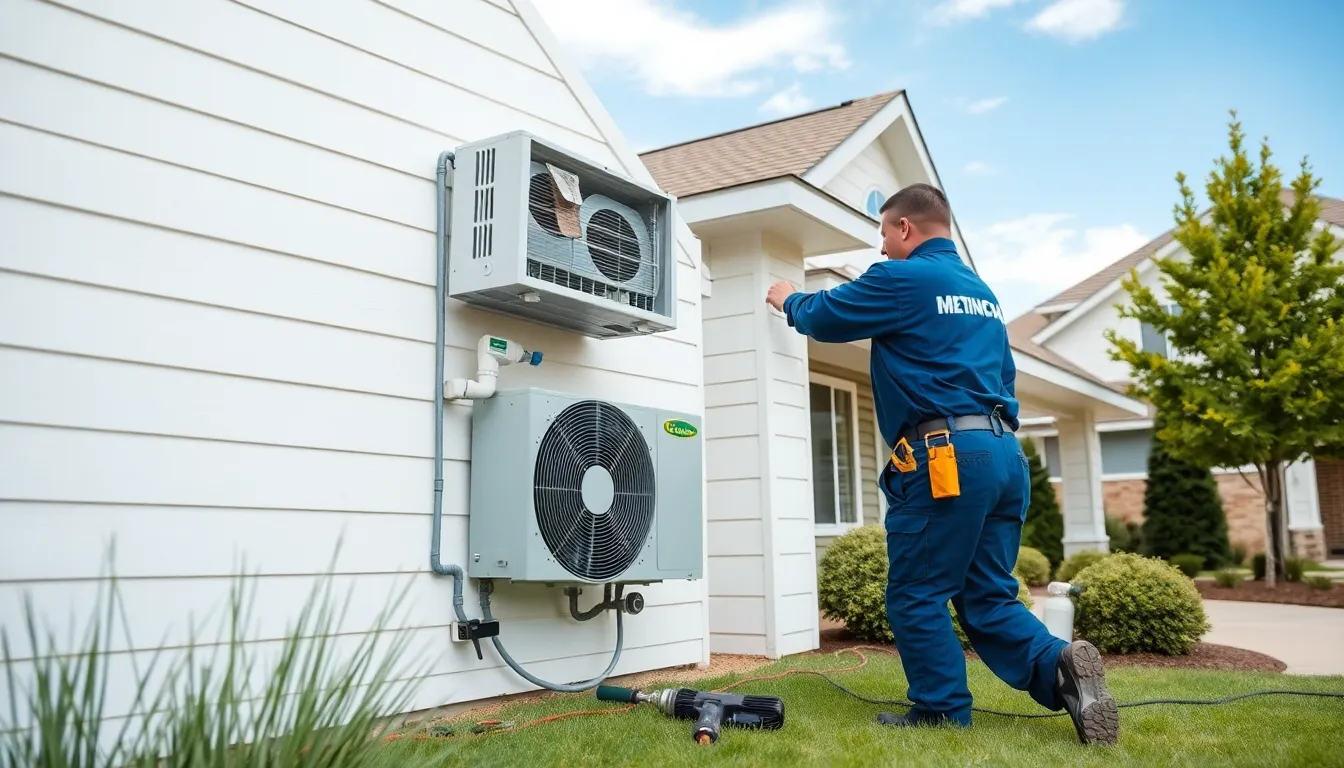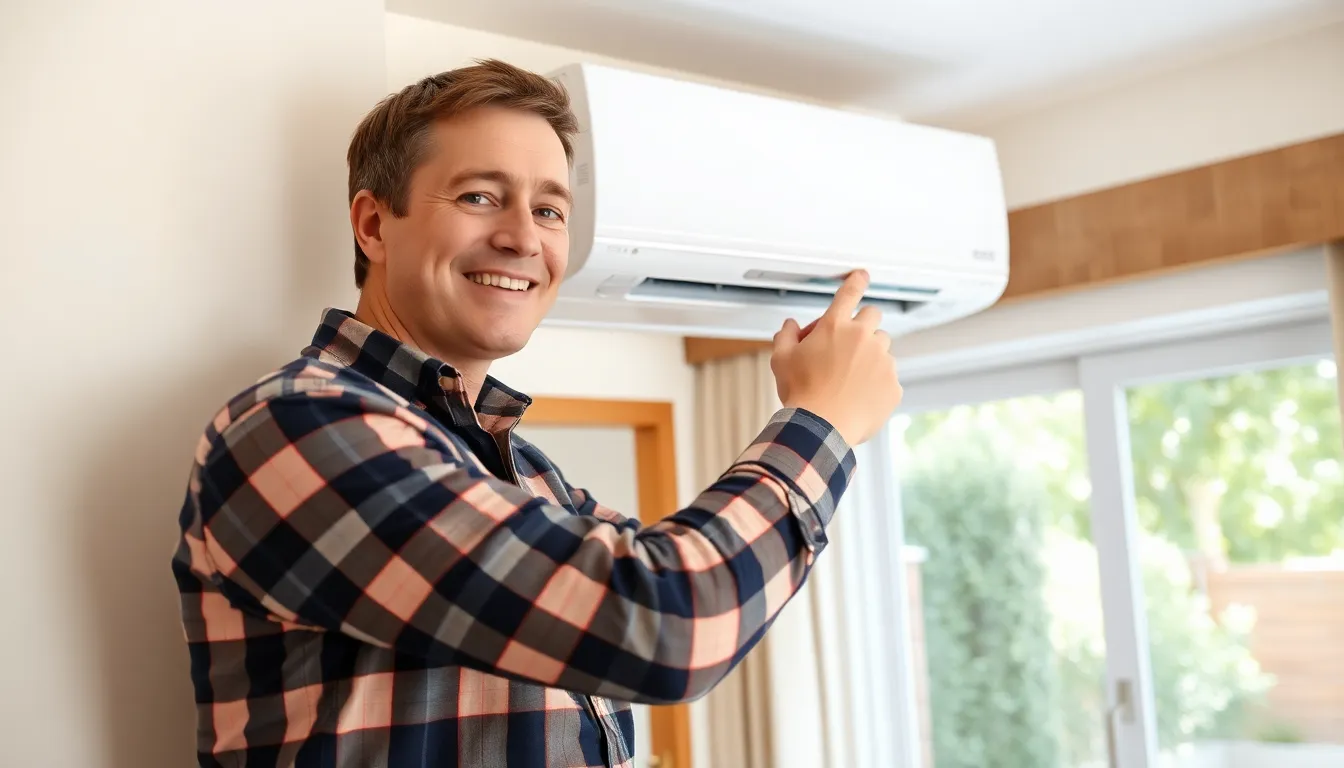Thinking about installing a mini-split system? You’re not alone! These nifty little units are like the Swiss Army knives of home comfort, offering heating and cooling without the bulky presence of traditional systems. But before diving into the world of temperature control, it’s crucial to tackle the elephant in the room: the cost.
Table of Contents
ToggleOverview of Mini Split Systems
Mini split systems stand out for their ability to provide effective heating and cooling in different spaces. Compact in design, these systems consist of an outdoor unit and one or more indoor units. This configuration allows for targeted temperature control in specific rooms.
Energy efficiency represents a key feature of mini splits. Many units boast high SEER ratings, translating to lower energy bills over time. Some systems qualify for energy rebates, helping offset initial installation costs.
Installation flexibility provides another advantage. Mini splits require no ductwork, making them an ideal option for homes without existing duct systems. Generally, installation involves minimal disruption due to the small size of the indoor units.
Noise levels tend to be lower than traditional HVAC systems, with modern mini splits operating quietly. This aspect makes them suitable for bedrooms, home offices, or any quiet space.
Maintenance remains straightforward. Regular filter cleaning ensures optimal performance, while professional servicing once a year helps maintain efficiency. Homeowners often appreciate this ease of upkeep.
Cost factors include both the equipment and installation. Average costs for mini split installation range from $2,000 to $5,000, influenced by the number of zones and overall complexity. It’s crucial to gather multiple quotes from licensed contractors to obtain accurate estimates.
Mini split systems offer a seamless solution for year-round comfort. Their ability to adapt to various living situations makes them increasingly popular among homeowners.
Factors Affecting Installation Costs

Installation costs for mini-split systems vary based on several key factors. Understanding these elements helps homeowners make informed decisions.
Unit Type and Size
The type and size of the mini-split unit significantly impact installation costs. Systems designed for larger spaces or multi-zone setups typically demand higher investment. Mini-splits come in various capacities, with options ranging from 6,000 to 36,000 BTUs. Selecting a unit that matches the specific heating or cooling requirements of the space ensures efficiency and comfort. Higher SEER-rated models may cost more upfront but result in long-term energy savings.
Location and Accessibility
Location and accessibility of the installation site play crucial roles in determining costs. Units installed on upper floors or in tight spaces might require additional labor and equipment, increasing overall expenses. Easy access to outdoor areas simplifies the installation process and often reduces labor charges. Consideration of local climate conditions may also influence unit selection and installation complexity.
Existing Infrastructure
Existing infrastructure influences installation costs for mini-split systems. Homes without ductwork may need extra components, such as multiple indoor units or additional refrigerant lines. In contrast, residences with adequate connections can streamline the process. Evaluating the condition of electrical systems also affects installation expense; outdated wiring might require upgrades for optimal performance and safety.
Average Cost Breakdown
Understanding the average cost breakdown for installing a mini-split system helps homeowners plan their budgets effectively. Costs generally include equipment, labor, and any additional expenses.
Equipment Costs
Mini-split system equipment costs typically range from $1,500 to $3,500, depending on factors such as brand and capacity. Higher SEER-rated units, which offer better energy efficiency, often fall at the top of this range. Some models include multi-zone capabilities, further impacting prices. Comparing brands ensures finding the best value for quality. Homeowners may also consider purchasing supplementary components, which can add to initial equipment costs.
Labor Costs
Labor costs for installing a mini-split system usually vary between $500 and $2,000. Technicians charge hourly, with rates ranging from $50 to $150, influenced by geographical location and installation complexity. Labor expenses can increase with the number of indoor units involved. Accessibility of the installation area also impacts labor time and costs. Including installation in separate areas might require additional labor, raising the overall investment.
Additional Expenses
Homeowners may encounter additional expenses beyond equipment and labor. These can include permits, which vary based on local regulations, and electrical upgrades necessary for optimal performance. Costs for ductless mini-split systems can rise if existing electrical systems are outdated or insufficient. Routine maintenance and potential warranty purchases also contribute to long-term expenses. Evaluating these factors helps in obtaining a complete picture of the financial commitment required for installation.
DIY vs Professional Installation
Homeowners often weigh the benefits of DIY installation against hiring a professional. DIY installation can save money upfront, with costs that only include equipment and materials. Skills required for a successful installation include basic electrical understanding, mounting experience, and refrigerant handling knowledge. However, improper installation can lead to system inefficiencies or even damage.
Professional installation guarantees adherence to local codes and industry standards. Certified technicians bring expertise and experience, ensuring proper setup and optimal performance. Homeowners often discover that professional installation provides warranties covering labor and equipment, adding value to their investment.
Many find that labor costs for professional services fall between $500 and $2,000. Time and complexity related to the specific installation can impact these labor expenses. Professionals also access necessary tools and parts that may not be readily available to DIYers, further enhancing installation quality.
Overall, considering the complexity and potential pitfalls of DIY installation encourages many to opt for professional services. Weighing the pros and cons of both options helps homeowners make informed decisions. Cost factors, labor intricacies, and personal skill levels contribute to determining the best route for installation.
Investing in a mini-split system can significantly enhance home comfort while offering energy efficiency and flexibility. Homeowners should carefully evaluate installation costs and consider factors like unit type and existing infrastructure. Gathering multiple quotes from licensed contractors ensures an informed decision, helping to balance upfront expenses with long-term savings.
Whether opting for professional installation or considering a DIY approach, understanding the intricacies involved is crucial. Ultimately, mini-splits stand out as a practical solution for heating and cooling needs, making them a popular choice for many households.




